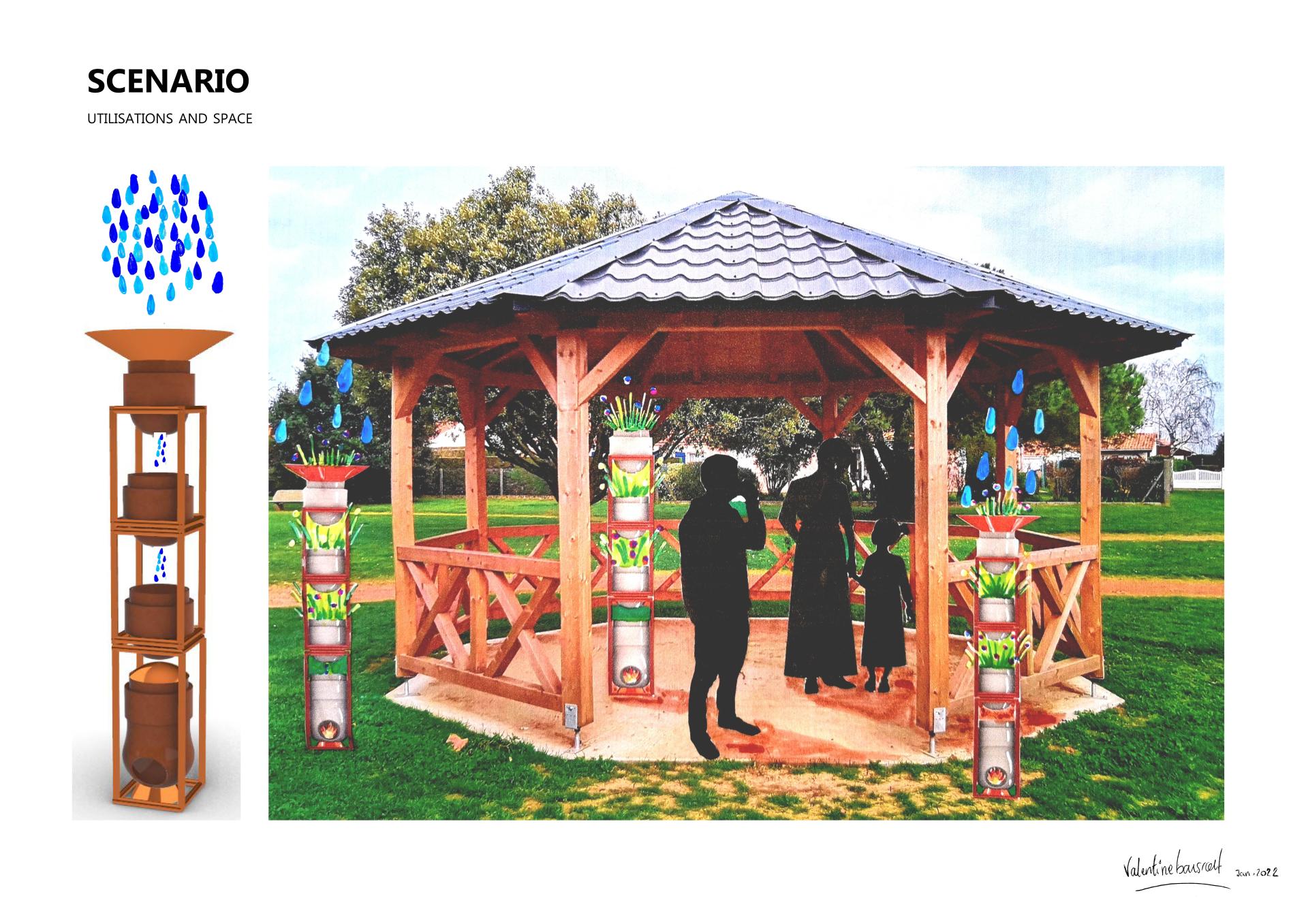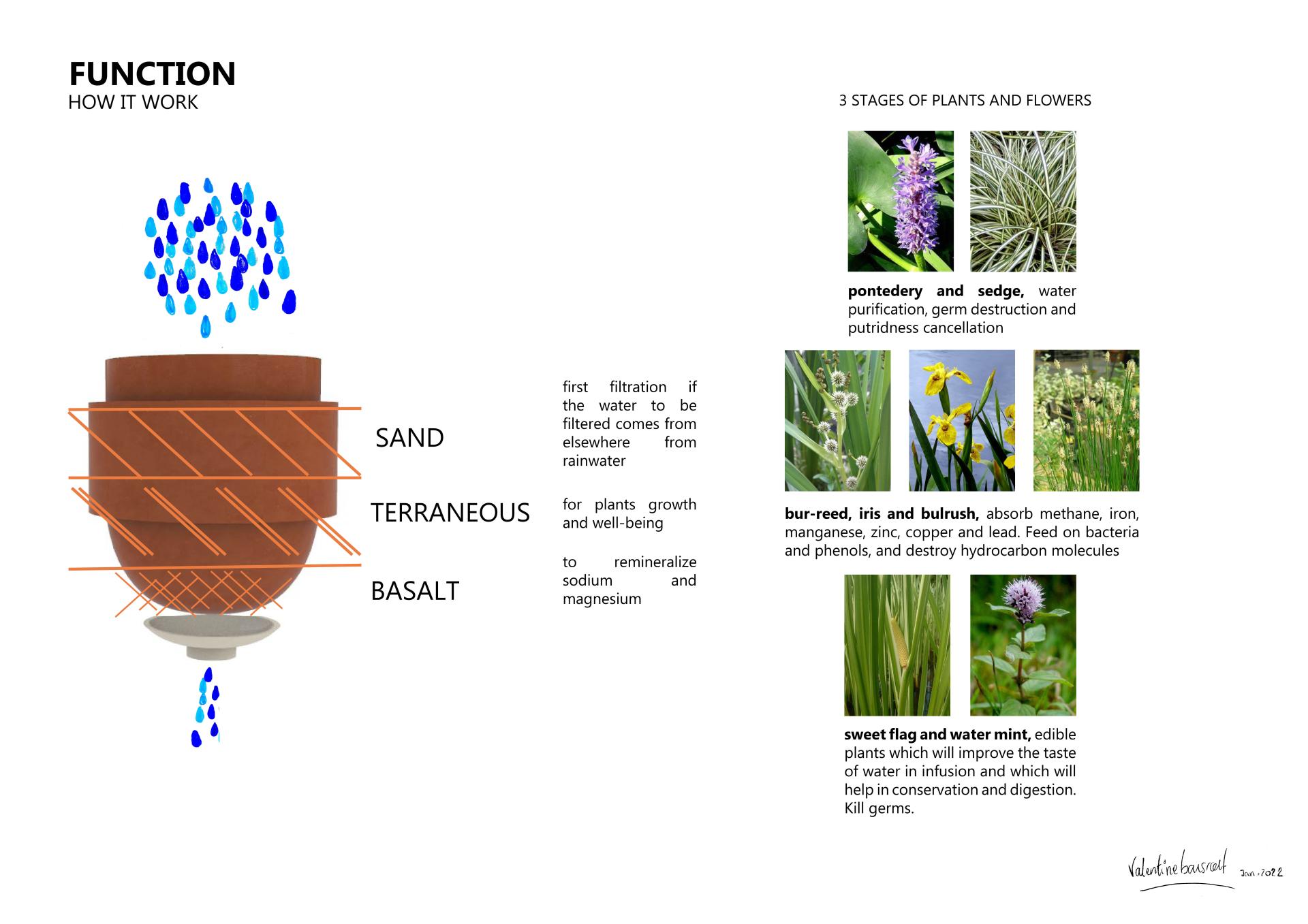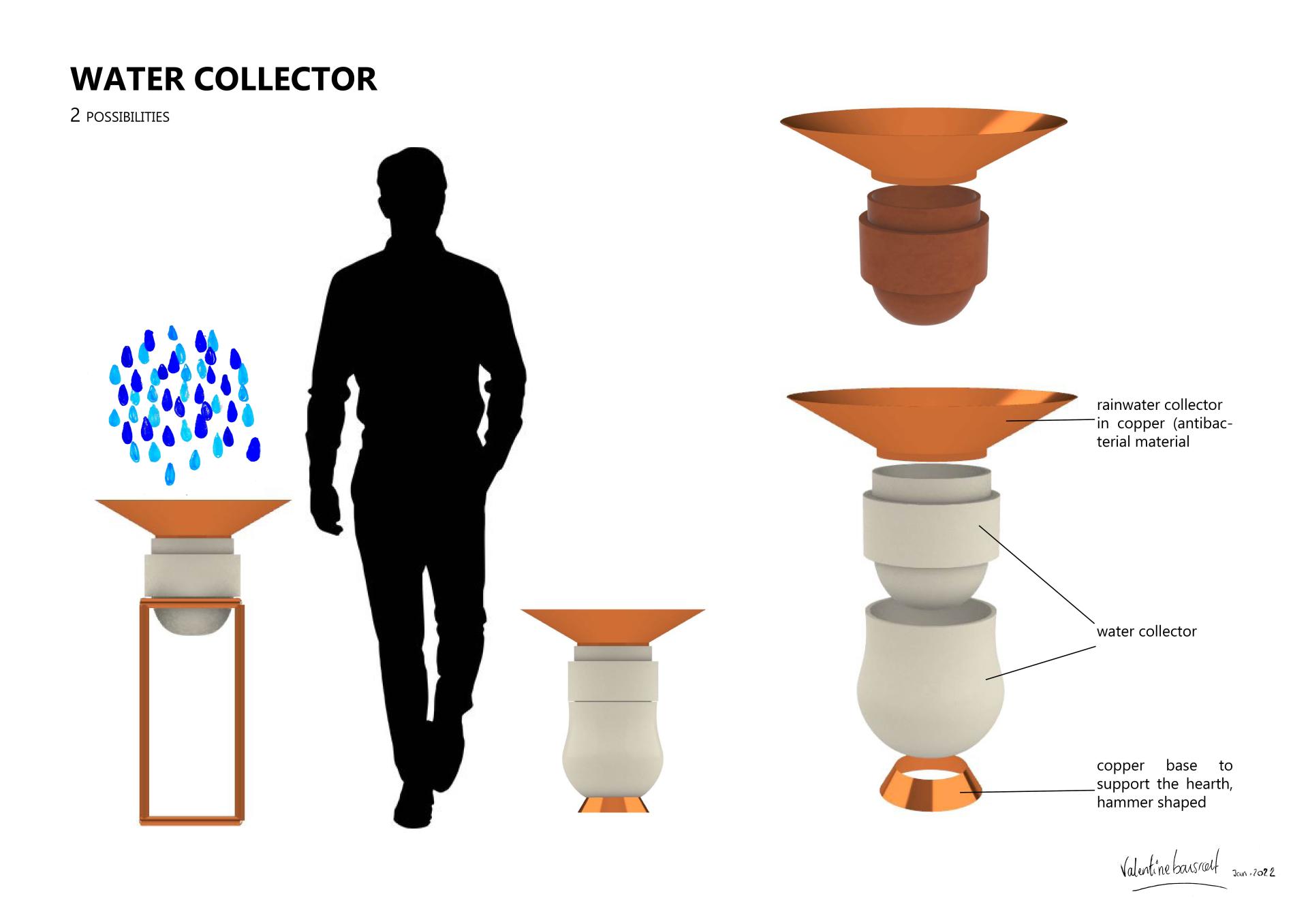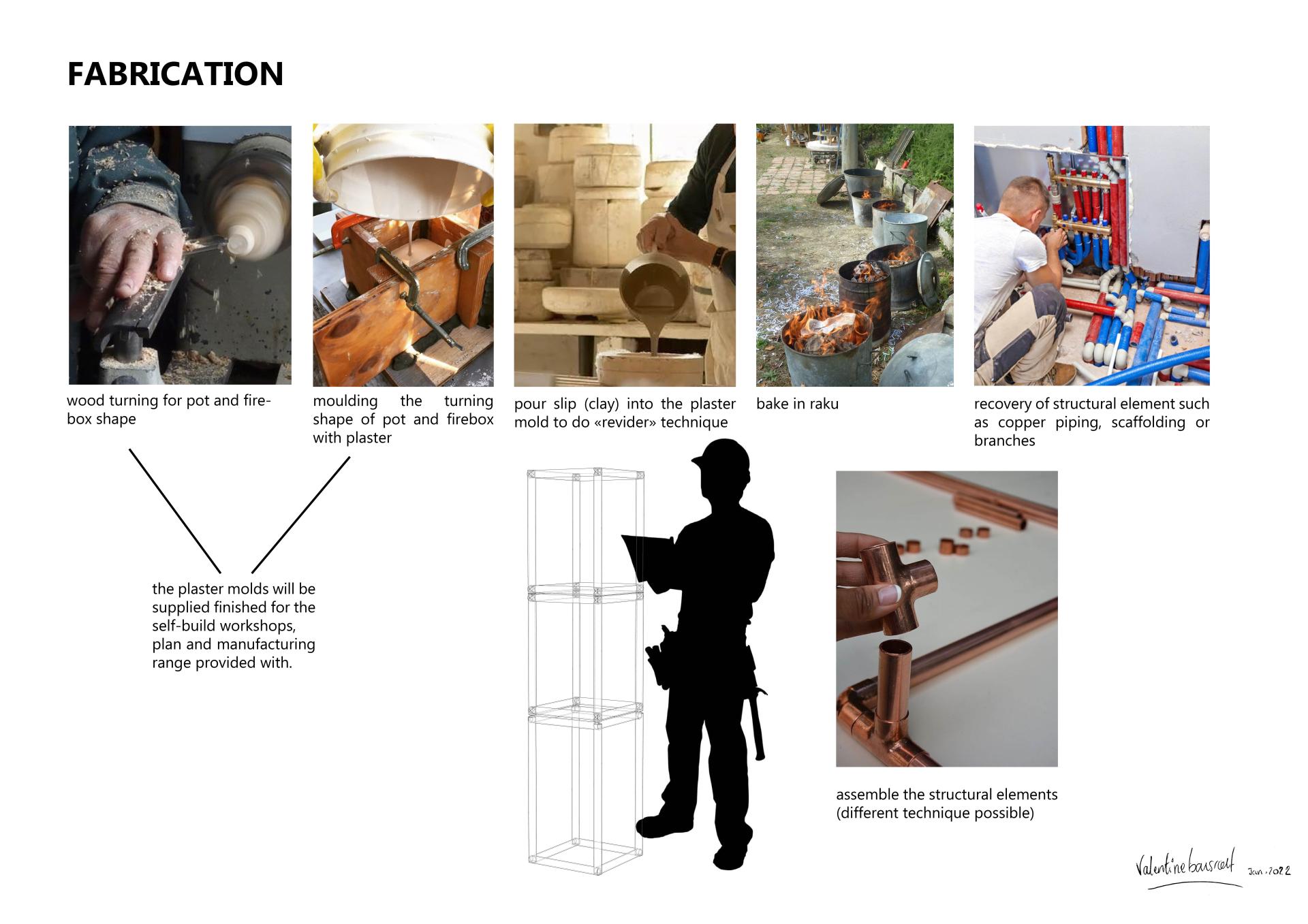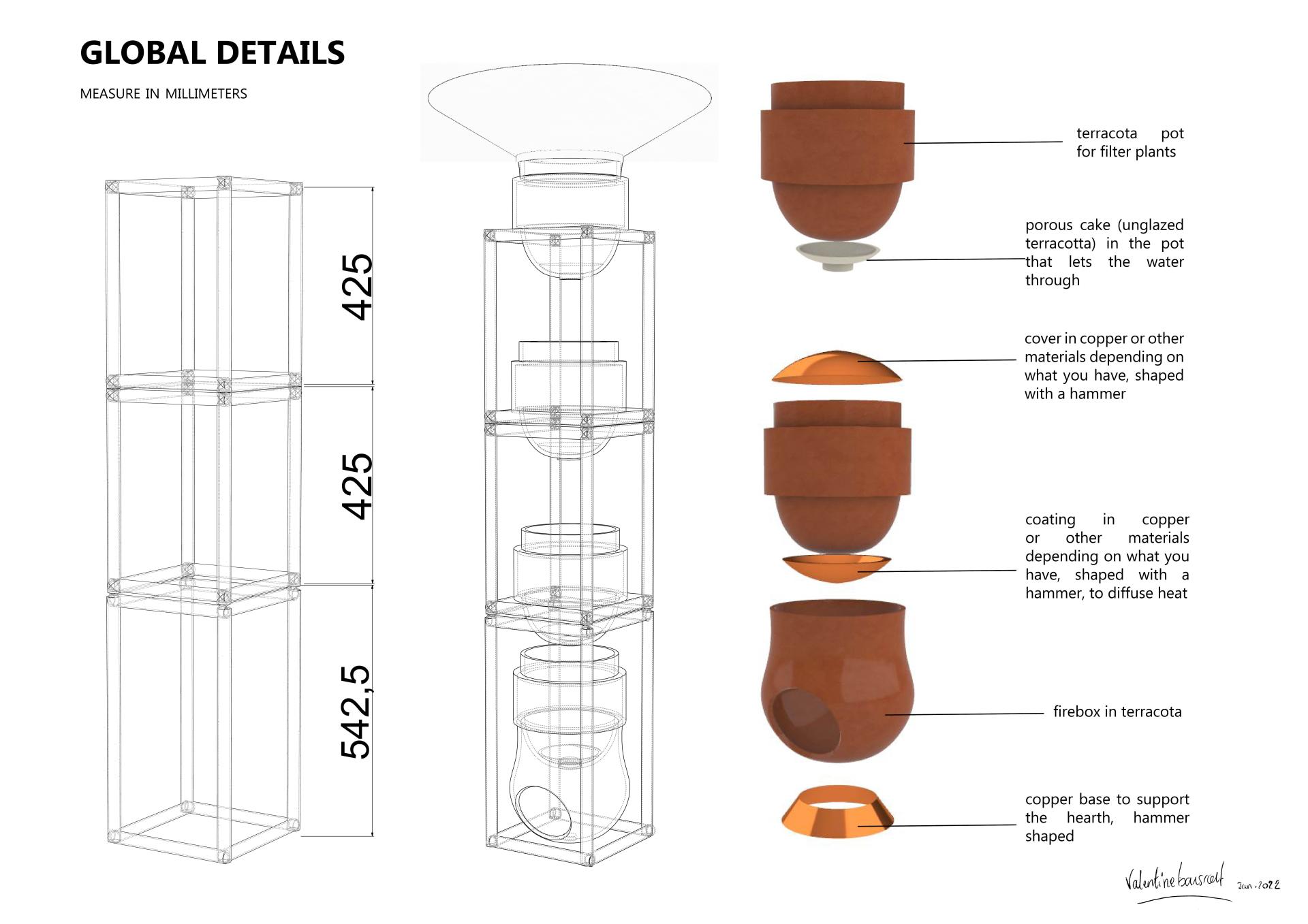Impluvium
Basic information
Project Title
Full project title
Category
Project Description
Impluvium is a planted-filter that provide drinking water from collected rainwater, to the inhabitants of a semi-urbain community. Thus, the concept can be produced and fonction without electricity and all the resources will be local. The device, after collective handicraft manufacture, take places in life center to bring inhabitants together and rhythm life around natural elements. So this bio-design system will be an ecosystem object, that we take care of because we feel symbiosis with.
Geographical Scope
Project Region
Urban or rural issues
Physical or other transformations
EU Programme or fund
Which funds
Description of the project
Summary
With impluvium, I want to show that other ways of seeing nature resources are possible, in particular by changing our gaze on our environment and our consumption. Then, I propose an object that responds to a problem that threatens us year after year because of climate change: access to drinking water. My system will be a planted filter, that is to say a filter that uses the principle of phytopurification (property of plants) to provide drinking water to people, from collected rainwater. The device will be placed in the center of a village – it could be on the main square – to bring the inhabitants closer together and give rhythm to life around natural elements. Thus, I create a craft object that can be produced and function without electricity, to be part of sustainable development and correspond to the concept of low-tech innovation while revitalizing ancestral know-how (such as raku or brassware). The impluvium is an object available for self-construction, which aims to gather the inhabitants around the creation of this animist object. There will then be as many variants of this object as there are handicrafts manufacturers, especially since all the necessary resources will be available locally. Because this process to obtain drinking water is long, access to it will be perceived as a privilege. The Impluvium then becomes a kind of ecosystem in the center of the village, a kind of oasis and takes on a spiritual dimension. It then leads to a ritualization and/or sacralization of water. This is an object that we want to take care of because we feel in symbiosis with it.
Key objectives for sustainability
Impluvium offers an easy access system to drinking water as an alternative to the current system that is too dependent on fossil fuels. Today in France the average consumption of drinking water per person per day is estimated at 150 liters while according to the WHO only 10 liters would be sufficient. For most French people, drinking water is not something precious. We turn on a tap and fresh water appears “as if by magic”. I think it is time to reconnect with this element and understand its preciousness as access to this resource is increasingly threatened and we must save it. Impluvium then helps to become aware of all the path that water must travel to reach us naturally drinkable, it is a kind of miniaturization of geological impluviums where rainwater infiltrates to be purified by plants and minerals and reach us in the form of spring water. Impluvium then appears as a sustainable and local alternative. It is developed in a low-tech approach, since the system works without electricity (the water flows by gravity), but is also produced by hand and locally, using natural fired clay in raku (available on all French territory without the need for transformation), and recycled materials such as pipes, scaffolding, barriers, table legs, etc. mechanically assembled cold (screws, ligatures, nails) all according to traditional craft techniques. This object is thought to last, both because it personally engages these users in its manufacture (open-source project), but also by the choice of its materials such as ceramic, an extremely durable material, finally because it is of a living and artisanal object that we would rather repair than throw away. Impluvium gives users back the weapons of their autonomy in terms of production and consumption.
Key objectives for aesthetics and quality
I then wanted to minimize as much as possible the transformation of the materials that I used for the impluvium. The creative relationship is then reversed, we design the aesthetics of the object around the material and its function, where we chose a material according to the shape of the object. Thus the impluvium will be a unique object with many variants forcing us to redouble our inventiveness to exploit the material to the maximum of what it is. A minimalist and functionalist aesthetic then emerges, attempting to break with the codes of design as current marketing tools. My main wish in the aesthetics of this system was that each material used be easily identifiable and that the function of the object be easily perceived and understood by the user. Moreover, I am strongly convinced that function and ergonomics necessarily result in aesthetics and that it is in this pure form that design comes to life. So for the system to work it was necessary that it take a vertical form and that it consists of several pots one below the other containing the plants and minerals necessary for filtration without electricity. It was also induced that empty spaces should appear between the pots to allow the plants to flourish. Thus each aesthetic choice has been conditional on technical constraints and a desire of clarity for the user. Both to allow him to build the impluvium with what he has at hand in the simplest and most intuitive way possible, but also so that he understands his object and feels close to it. Once the system is installed, it is designed to be autonomous. It collects rainwater itself and filters it, the user only has to use it. In case of light rain it can add water from adjacent collectors. It is a modular system that adapts to its environment and its users. It can be enlarged or multiplied depending on the number of users and the context of use. The impluvium then offers a fluid, pleasant and personal user experience.
Key objectives for inclusion
Impluvium is a project that brings together members of a community around natural elements such as water, plants, etc. But it is also a project that has an educational dimension in several aspects. In a first place impluvium by being intented for self-construction makes it possible to highlight forgotten artisanal techniques or at least currently reserved for an elite able to buy objects of arts and crafts , usually very expensive handmade. Impluvium then allows the democratization of these techniques and this type of object through its manufacturing process and these materials accessible by all throughout the territory. The educational aspect is also found in the function of the object itself, which sheds light on the natural filtration of water, by making the user an actor in it, bringing him into a symbiotic and privileged relationship. with the natural elements providing it with its water. Impluvium is a project that wants to be democratic and easy to access, even in the event of strong systemic disturbances. It is easy to manufacture both in terms of technique and materials (local materials and group manufacturing, artisanal). The impluvium also wants to be democratic in its function since it aims to offer easy and certain access to drinking water in any part of French territory or europe. (filter plants can be found in any swamp, clay as well). The fact of proposing the project for self-construction allows a faster dissemination and a more certain commitment of the communities on the project, since it comes back at a lower cost, and can more easily adapt to the problems of each municipality or territory.
Physical or other transformations
Innovative character
With impluvium I had a strong desire to be part of a democratic process, wanting to propose an object and an alternative solution that would give people back some autonomy by reconnecting them to nature. Help to become aware of the importance of water and its natural filtration spaces threatened by betonization. To create clicks among users, I thought that involving them in the life of the object would be good, especially since it would force me to imagine a didactic and democratic design. It was obvious that the creation of such a project should have a less energy and material impact. Since it was so much to propose a solution to the future water shortages due to global warming. The creation of an impluvium should not have created more damage. So from these specifications, I understood that the circular creation would be a perfect approach both because it allows the plurality of examples of applications throughout the territory but also because it requires going back to the basics of manufacturing and design. I then drew on my know-how as an art bronzière and wood/bronze turner to create an innovative object that could function and be manufactured without electricity without reducing the quality of use and execution. The manufacturing scenario involving members of a community around a participatory workshop is then interesting since it brings together, involves, and democratizes forgotten techniques. Impluvium is then a project combining sustainable development through its materials, its function, its design/manufacturing; inclusion due to the fact that it brings together the members of a community, is democratic, modular and easy to manufacture and use, but also combines aesthetics and pleasure of use since it does not compromise ergonomics or quality of execution thus allowing the development of a new post-industrial and democratic aesthetic.Impluvium so contribute to do better with less to focus on the essential and reconnect with nature.

